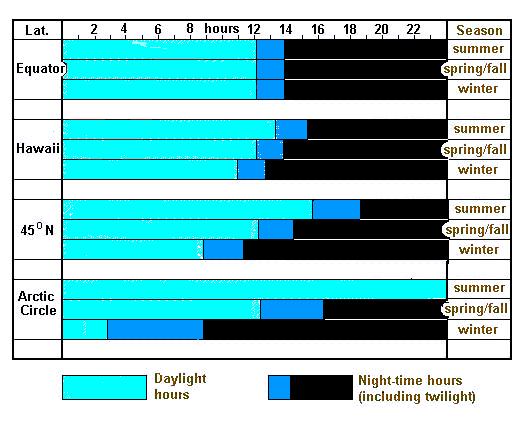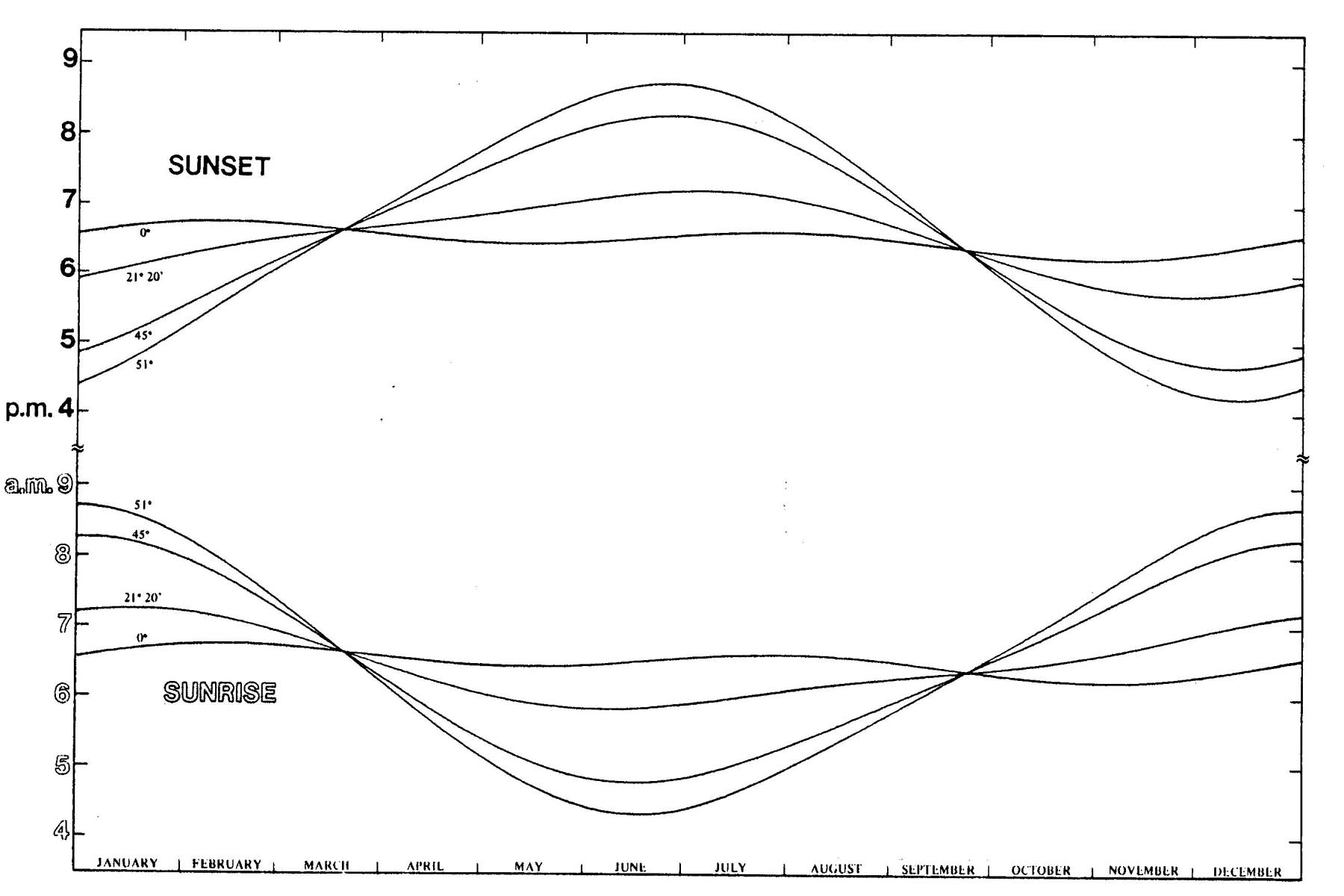| F |
Further inspection of figures 7, 8, and 9 reveals that the time for the Sun to reach these twilight angles differs at different seasons. At the equator, the evening Sun reaches the position ending civil twilight in only 23 minutes. In Hawai'i, civil twilight lasts 27 minutes in winter and 28 minutes in summer. At 45 degrees latitude the same period is 35 minutes in winter and 37 minutes in summer.
The more popular concept of twilight more nearly matches the period of nautical twilight, and the effect of latitude is more pronounced for this period. In Hawai'i, nautical twilight ends 52 minutes after sunset in winter and 55 minutes after sunset in summer. At 45 degrees latitude, the corresponding periods are 73 minutes in winter and 85 minutes in summer. the longer hours of twilight at higher latitudes contribute to the acceptability of daylight saving time. In London, England, 51 degrees north, on the first day of summer, the Sun sets at 8:18 P.M., and nautical twilight ends nearly two hours later, at 10:16 P.M. Only a little farther north, latitude 54½ o , nautical twilight runs through midnight, lasting all night long in summer. At the Arctic Circle, while the Sun is below the horizon for long periods in the winter months, much of its path is within the nautical twilight zone below the horizon , so that twilight lasts most of the day even on the first day of winter. The portion of night-time hours that receives some illumination, through nautical twilight, is shown in Fig. 10.
 |
|
Figure 10. Seasonal and geographic variations in daylight, twilight, and dark night hours.

